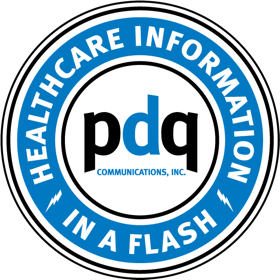Healthcare providers are an extremely busy and highly discerning consumer base. Gaining and holding...
Finding the right healthcare providers for your products and services is an essential first step for your marketing efforts. Understanding your ideal audience and their preferences helps inform your overall strategy, enhance your campaign results, and maximize your return on investment (ROI).
Getting your products in front of the right physicians at the right time is key to driving meaningful engagement and results. This is where precise segmentation and targeting comes in. By understanding an HCP’s specialty, prescribing habits, patient population, and preferences, you can deliver messaging that resonates when it’s most relevant.
In this post, we’ll explore ways to enhance your HCP segmentation strategies—helping you build smarter, more effective campaigns from the ground up.
Segmentation: The More Specific, The Better
Segmentation is pivotal to crafting and deploying effective, personalized messaging that boosts engagement and conversion rates.
This involves organizing your audience into clear, non-overlapping groups based on the factors you care about most. This also improves your ability to measure and analyze key performance indicators (KPIs).
Major categories of physician segmentation include:
- Demographics (age, gender)
- Psychographics (lifestyle, specialty)
- Behaviors (buyer’s stage, prescribing behavior)
- Geography (location of practice, regions served)
- Preferred Communication Channels (email, direct mail, etc.)
You can further divide your market into narrower and more focused segments, but these are good starting points for an initial pass at shaping your strategy and guiding your targeting efforts.
Enhancing Segmentation With Predictive AI
Artificial intelligence and predictive analytics can now play significant roles in segmentation. AI can analyze historical and real-time data to forecast HCP behavior—such as identifying which physicians are likely to adopt a new therapy or switch treatment protocols.
For instance, AI might flag a group of primary care physicians who recently increased diagnostic testing for asthma. This signals a potential shift in patient population, enabling marketers to proactively target those HCPs with messaging about a new asthma therapy.
In short, you can reach high-potential HCPs with timely, relevant messaging—often before your competitors even identify the opportunity.
Behavioral and Intent Signals Matter More Than Ever
Segmentation has expanded to include behavioral and intent data—such as website engagement, content downloads, or even Continuing Medical Education (CME) activity. These insights reveal where HCPs are in their decision-making journey and enable hyper-relevant messaging.
For example, an HCP researching new migraine treatments may be highly receptive to messaging around your product's efficacy data or patient support resources.
Mid-Level Prescribers Also Matter
Targeting has evolved beyond physicians alone. Nurse practitioners (NPs), physician assistants (PAs), and pharmacists also play increasingly influential roles in prescribing and therapy management.
Effective segmentation now includes these mid-level HCPs—ensuring your brand reaches every relevant decision-maker in the care continuum.
Leveraging Claims Data
Prescription information is key to your segmentation strategy, but claims data is equally important. Billing codes submitted by HCPs and pharmacists provide important psychographic insights, including their willingness to try new therapies and tests (and, thus, more likely, their willingness to try new medications).
Access to nearly real-time data on HCP attitudes toward specific products一and their openness to early adoption一helps better understand their patients’ conditions and the optimal time to target specific HCPs. Tokenization and anonymization ensure these insights are HIPAA compliant while supporting precise, data-driven marketing decisions.
Smart Targeting Turns Segmentation Into Action
Segmentation helps define your audience—but targeting is where strategy becomes execution. It’s the process of selecting the most relevant HCP segments and delivering tailored messaging through the right channels at the right time.
Effective targeting ensures your efforts aren’t just precise—they’re impactful. It lets you focus your resources—budget, time, and field efforts—on the segments most likely to drive value. Rather than spreading your message thin across a broad audience, targeting helps you concentrate on high-opportunity HCPs based on prescribing behavior, patient demographics, geography, or openness to new therapies.
Modern targeting strategies are increasingly data-driven, enabling marketers to:
- Prioritize HCPs based on recent claims, diagnostic trends, or formulary access
- Align content and channels with behavioral or intent signals
- Sequence outreach across email, direct mail, digital ads, and field teams
- Optimize spend by focusing on HCPs most likely to engage or convert
When paired with smart segmentation, targeting gives you a roadmap for high-efficiency engagement that supports both short-term conversions and long-term HCP relationships.
Partner With PDQ Communications for Expert Segmentation and Targeting
Effective segmentation and targeting require both strategic expertise and access to high-quality data. PDQ Communications delivers both, helping pharmaceutical companies and healthcare organizations connect with the right HCPs through sophisticated, data-driven marketing approaches.
Our specialized expertise in healthcare marketing enables us to develop highly targeted campaigns that deliver measurable results. With access to extensive, expertly segmented HCP email lists—including physicians across hundreds of specialties and the largest opt-in pharmacist database in the United States一we provide precise targeting capabilities unavailable elsewhere.
Advanced Payor-Based Segmentation: A PDQ Advantage
We also offer segmentation based on payor relationships, a unique capability that sets us apart in the healthcare marketing industry. Our proprietary database combines prescriber data with detailed information from more than 1,300 health plans, including major insurers such as UnitedHealthcare, Medicare, Medicaid, and Aetna. This advanced segmentation capability enables unprecedented precision in HCP targeting based on:
- Practice-level acceptance of specific insurance plans
- Formulary positions across different payors
- Concentration of patients in specific plans
- Geographic targeting by region, state, or zip code
Measurable Success Through Expert Guidance
Partnering with PDQ Communications means more than access to great data一you tap into our proven methodologies that drive results—including our 99% email deliverability rate and guaranteed open rates on our lists.
Our consultative approach means we work closely with you to refine your campaign strategy from start to finish—from developing targeted messaging and selecting optimal channels to optimizing content for maximum engagement across different HCP segments.








